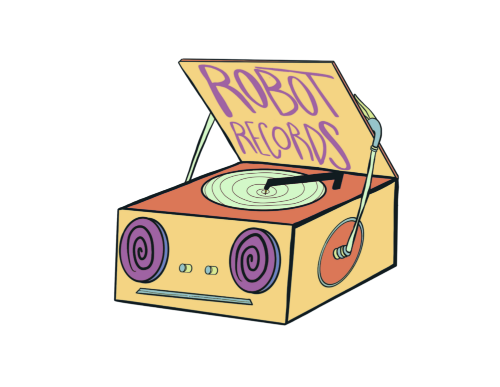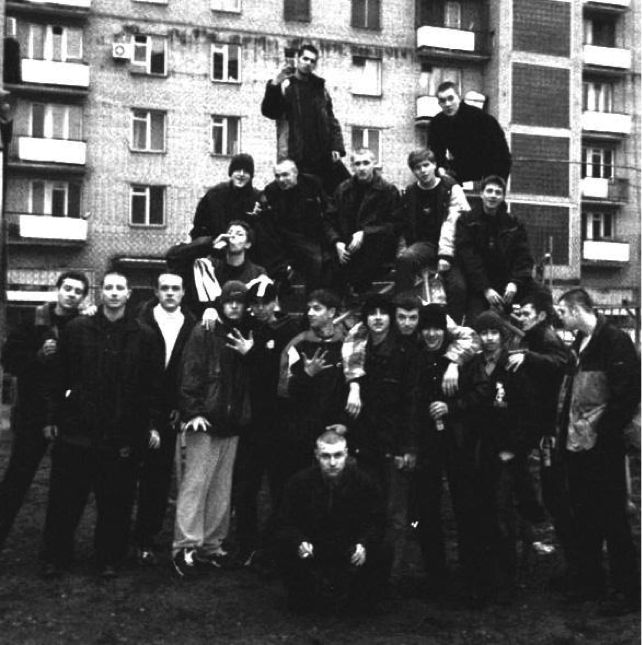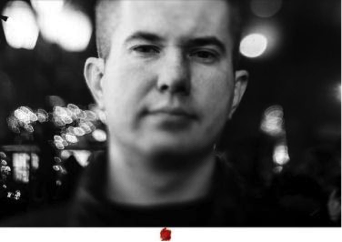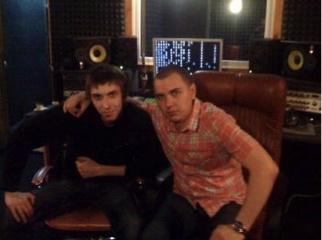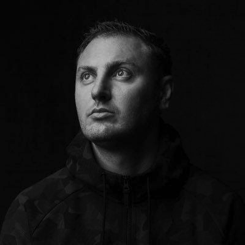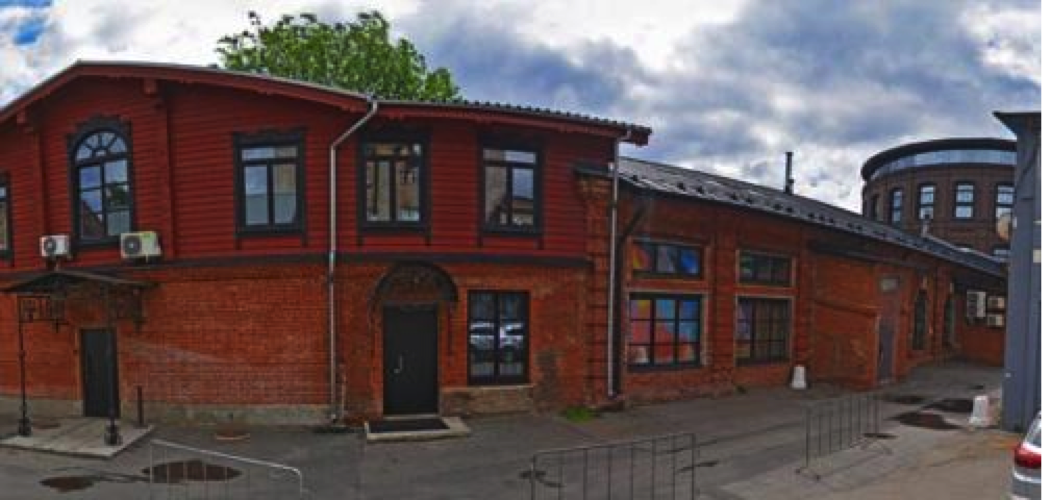OUT OF THE WHITE SMOKE EMERGES A NEW ERA
OUT OF THE WHITE SMOKE EMERGES A NEW ERA
A dive into 90s and early 2000s Russian Hip Hop History
by Ivan Moukhin
As Hip Hop culture grew in Russia and Eurasia in the late 90s, there still remained numerous divides and hurdles that the movement had to overcome. The key factors that had helped gain this genre a foothold in the region, Break-Dancing, its African American foreignness, and the rebellious nature of emulating it, had now started to become its key detriments. The years of emulation and "popness" of the business side in the late 90s and early 2000s gave the general public an attitude towards rap that was a simple caricature of a foreign culture. Hip Hop was an unfamiliar strange genre to many and still considered new in the late 90s. Even with its decades of progress it was still heavily unknown in the country and a minor subculture that at the time was dominated by Rock, Electronic, and traditional regional genres. The culture shock itself was part of the appeal in its early days but this led to a thirst for “Real” Hip Hop as well as evaluations of what that meant to the fans and community. This was definitely an interesting dilemma to be in, especially considering what was going on in Russia at the time.
When the 90s came about in Eastern Europe and Central Asia, many of the repressed elements that were forced down by the Soviet system, had become hyperbolic in this new capitalistic age for the regions. Criminal elements, which already held resources and business experience due to the black market, gained socio-economic footholds. Nazi elements, various nationalistic skin head movements, and other extreme elements sprang from the disillusionment of the Soviet Union and other unaddressed demons of the past. As Hip Hop at its core is a modern artistic representation of day-to-day life in any area, this foundational pillar within the culture allowed it to survive during these times, but to say it was a fight for survival is an understatement.
Bad Balance
Any Russian Hip Hop head who was growing up in the 90s can tell you the struggle it was to even purchase and bring home a rap album, let alone try to actually be a rapper in the country. While Bad Balance and the other old heads of the culture were beginning to turn the genre into an industry that businesses can invest in, the youth and average citizens with Hip Hop dreams had to fight tooth and nail to enjoy it. It was a known occurrence that groups of young and old skin heads would post up near record shops and try to intimidate kids and fans from purchasing rap albums. Wearing baggy jeans and hoodies was a statement to these people, one that they wanted to suppress. Partaking in this culture was understood as partaking in the “other,” promoting these cultural elements triggered the insecurities of cultural identity and rage that was felt by these skinheads during the turmoil of the 90s, to some it was even promoting the way of life of the “enemy”, America, the West, Black, pick a label. Countless fights, jumpings, robberies, even instances of homicide and rumors of hangings were presented in the path of young hip hop heads in Eastern Europe. Hurdles that many had to overcome by adapting and radiating the energy of the culture even brighter for these assholes to see. In my opinion, this led to some of the unique distinctions within the zeitgeist of Eurasian Hip Hop such as the fitness and martial arts elements, specific drug cultures of the late 90s and early 2000s shown within the genre, lack of “Street vs. MC'' mentality, and of course the eventual regional styles of rap music that would be developed.
A faction of White Smoke Clan
One example of this was the forming of groups like White Smoke Clan in 1996. A group of hip hop heads and rappers that unified to fight back against the skinheads and neo nazis that were terrorizing young hip hop fans and performers. Springing up in various regions of Russia and eventually having numerous factions/chapters, this coalition would act as a form of security during underground shows and for record stores. They were known to attack skinheads and neo nazis in areas where it was reported that an attack occurred on hip hop fans or the general public. Occasionally even attacking gatherings and soccer clubs where such groups were known to hang out at. Some of these fights would have hundreds of people involved, with stabbings not being an unusual occurrence.
Another one of the unique experiences of Eurasian hip hop of the time was the cultural debate of what was considered “real” hip hop. Internally amongst the rap scene there was of course the usual mainstream vs. street rap clash, but externally there was also much debate on what hip hop should be in Eastern Europe. Music festivals such as "Rap Music 1999", sponsored and organized by groups such as Bad Balance, had occurred in Moscow and were catalysts/fulcrum points for many rap groups that became notorious in the 2000s, but the public was still hesitant to really adopt the culture fully. There were fans in the 90s who would boo Russian rappers as they opened for famous American acts, just for the sheer fact that they were rapping as Russians. Some considered rap and hip hop to be a completely foreign thing and as such should be left to African Americans to perform and create. This is also not including the tension that rose due to the skinhead issue. There were those that felt that mainstream rappers were just for show in their aggressive lyrics and behavior, as they weren’t “on the front lines” when skinheads would attack fans after shows, instead leaving with their own security beforehand. As rap became more commercialized and the phenom of Detsl came about in the late 90s and early 2000s, a few key players began to emerge from this scene, Mnogatochieya (Многоточие), Kasta aka The Cast (Kacтa), and the eventual creation of Gazgolder.
Mnogatochieya
Mnogatochieya is a play on words with the terms "many"and "sharp” and is a live band rap group that was formed in 1997. The group kept it real on life topics that weren't usually discussed like drugs and the struggles of poverty of the time, while promoting a positive drive and almost hopefulness towards the future. Releasing a vast amount of projects over the years, this group is considered one of the OGs of modern Russian Hip Hop. Some would say the group's album "Life and Freedom" is one of the greatest Russian rap albums of the time. Furthermore, their song "2 Fake MCs" officially started a historic beef in Russian hip hop, with Mnogotocheya dissing Bad Balance in the track. When asked to comment on the matter in an interview on the Inside Show, Rustavelli, an MC in the group, claimed there was already tension from earlier instances in the crew’s career. This beef to many fans embodied the growing resentment of the mainstream that was occurring as Russian Hip Hop became commercialized. Some felt that the art was not reflecting the everyday lives of people in Russia and hence wasn't “real” Hip Hop. In many regards Mnogatochieya is considered an OG group in the emergence of Russian Hip Hop finding its identity in the culture. Their original members include
Rustavelli (MC)
Кузьмитчь aka MC 1.8. aka DJ Navvy (MC and Producer)
DJ HASSAN (producer)
Тюха (lead guitarist/producer)
Грел (bassist)
Kинг Конг (Homie and MC)
MC LE aka Нелегал
(Trilingual MC rapping in Georgian, English, and Russian)
L.BEEATCH aka Бьяча (MC and one of the OG female rappers of Russia)
Гена Гром (MC)
Kasta Albums (Louder than Water, Higher than Grass) & (Phoenix)
Kasta aka the Cast, is a group that’s from Rastova, a region in southern Russia. They started as a crew named Psycholyrics (Психалирик) in 1995, which dropped an album in 1997 with a bunch of rappers from Rastova called the "The Cast." The success of the project led to the group being formed as "The Cast'' in 1999, dropping the album 3D Rhymes (Трёхмерные Рифмы). The crew’s 1st "official" album dropped in 2002 "Louder than Water, Higher than the Grass" (Громче воды, выше травы) solidifying the groups status. The group had dropped individual projects through-out the years prior, but this was considered by many to be their 1st album. Over the years, the Cast has become an internationally renowned rap crew, being one of the current stars representing Russian Hip Hop in the global culture, dropping hit projects to this day. Their members include:
Влади (MC, producer, and founder of group)
Шымь (MC)
Хамиль (MC)
Змей
(MC, later joined the group officially but preformed with them from early days)
Honorary mention:
Basta (Was in the original group, rumored to have created the name of the group Psycholyrics, but left the group when Kasta was formed)
Speaking of Basta, it would be amiss to not briefly discuss the entity known as Gazgolder. Starting as an artist collective which would meet at a closed down nightclub in 2005, members of this collective would eventually create one of the most popular labels and rap brands in Russia. As this collective evolved into a label in 2006, one of the first artists signed to it was Basta. This artist may be one of the most well known and popular rappers in Russia currently, with countless hit tracks and projects under his belt. After numerous successes with his albums, Basta became partners with the original owners of the label and continues to be to this day. The label has produced and signed some of the most popular Russian artists of the last 2 decades, with rappers such as Guf, Skriptonit, and Smoky Mo. As the 2000s began it was clearly apparent who would be dominating the scene of Russian Hip Hop as well as establishing the new standard for the genre to the public, Gazgolder.
Gazgolder Club in Moscow
Gazgolder Club
Gazgolder Club
The late 90s and early 2000s were a wild time for Russian Hip Hop as a whole. It was a time when the culture was finally beginning to form its own identity within the global artform. The trials that fans and artists faced during this era trained and primed the movement to take off in the new millennium. The perseverance of those that believed in and loved Hip Hop, allowed it to become part of the fabric of modern Russian pop culture. Today you won’t find any Russians that aren’t aware of what rap or Hip Hop is. It has become so intertwined in modern entertainment that it's nearly impossible not to notice it. To think though, if the youth of the 90s hadn’t fought and kept supporting the culture through literal identity clashes with skin heads, this wouldn’t be a reality today. As any real Hip Hop head knows, you got to give respect to the OGs.
